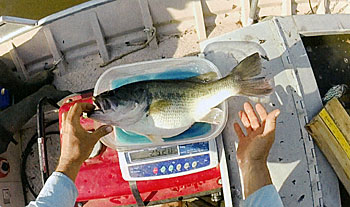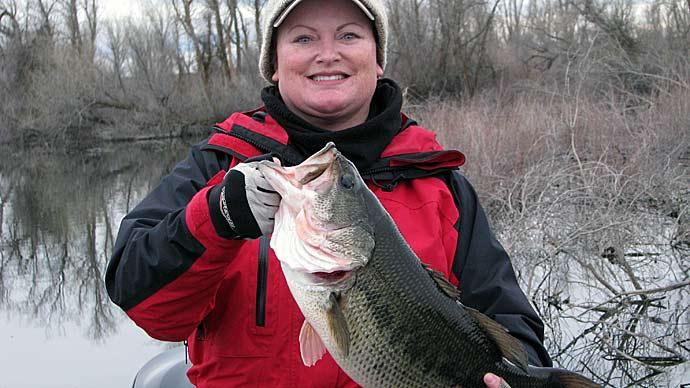
The excitement generated when catching a massive largemouth bass is a special feeling capable of igniting a lifelong passion. Just picture a youngster, cheeks puffed out, back arched, both hands on a fishing pole that's bent double with a big bass at the business end of that rod, doing what it does, jumping, splashing, and fighting. That's a memory etched deeply into anyone's mind. As you dedicate time to catch more of these trophy fish, you begin developing an appreciation for these lunkers as you recognize how rare they truly are. So, why are these big fish so few and far between? Once you understand the numbers and concepts behind why big fish are scarce, you will likely re-strategize your management approach instead of expecting big fish to occur naturally.
In the process of understanding how to produce large numbers of trophy predator fish, such as largemouth bass or tiger muskies, you need to recognize the challenge of raising predators in general. If you think about it, nearly all species of wildlife being managed are prey species, not predators. One reason large numbers of big predator fish do not occur frequently in nature is the basic fact that they occupy an upper tier in the food chain where the size of their population is limited by the amount of forage for them to eat.
The rate at which predator fish convert forage into flesh plays a significant role in growing big fish, and the numbers your pond or lake will support. As you likely have learned along the way, predator fish must consume roughly ten pounds of forage to grow one pound of flesh. The actual conversion rate will vary from this general 10:1 reference depending on the relative weight (Wr) of the forage teamed with the makeup (percent protein, fat, etc.) of teh forage species. You don't really have a lot of control over that, unless your fish are always well-fed. Also keep in mind, your predators are likely not growing as fast as the 10:1 ratio would lead us to believe, since it is not accounting for energy they expend on a daily basis. Fish that have to work harder to eat don't convert their food as well as those which don't.
To grow large numbers of trophy predator fish, you will need to maintain a streamlined food chain which can be accomplished by having your trophy fish eating forage fish species. That likely means supplemental stocking of efficient forage fish. With this strategy you can grow one pound of predator for every ten pounds of forage fish. One situation to avoid is trophy predators eating smaller predators. This adds an additional tier to the food chain, and as a result you convert prey into trophy fish at a 100:1 ratio. To help understand how critical this 10:1 vs 100:1 conversion rate is, I present four hypothetical scenarios. All four scenarios take place in a theoretical sample pond that is annually producing 300 pounds of edible forage fish per acre of water. Scenario 1: 10:1 conversion ratio with trophy largemouth bass growing one pound per year eating forage fish species (i.e. eating 10 pounds of forage fish annually): 300 pounds of forage per acre = 30 pounds of bass growth per acre per year.

In Scenario 1 a pond might support 30 trophy size bass per acre if they were growing at a rate of one pound per year, according to the formula, and if those 30 bass were all you have in the pond. However, because a sustainable fishery would also require low numbers of younger bass in the pond to eventually take the place of the bigger fish, you would not have 30 trophy bass per acre at one time. So realistically, your maximum number of trophy bass at any given time would likely be closer to 10 fish per acre, depending on your definition of a trophy fish.
Scenario 2:100:1 conversion ratio with trophy largemouth bass growing one pound per year eating smaller bass (i.e. eating 10 pounds of smaller bass annually):
300 pounds of forage per acre = 30 pounds of young bass growth per acre = three pounds of trophy bass growth per acre.
In this hypothetical Scenario 2, large bass are primarily eating smaller bass, and as a result the pond can only support a maximum of three trophy size bass per acre with a growth rate of one pound per year. Realistically, since a sustainable fishery would require low numbers of younger bass in the pond to eventually take the place of the trophy fish, you would not be able to hold three trophy bass per acre. As a result, the number of trophy fish at any given time would be closer to one per acre.
Scenarios 1 and 2 are on opposite ends of the predator growth conversion rate spectrum. Most private fisheries have statistically-mean largemouth bass conversion rates which fall somewhere between Scenario 1 and Scenario 2. Pond owners who have had success producing high catch rates of trophy bass did so with a mean largemouth bass conversion rate closer to 10:1.

A key to producing sustainable trophy bass fishing is to maintain this 10:1 conversion rate over time. It becomes easy for fisherman to take a relaxed management approach once they have achieved a population of trophy fish. Guard against complacency with your management strategy. As fisheries managers, it is important to recognize that older bass will die off and that you need the younger generations of bass to have good annual growth rates.
That strategy ultimately includes a thoughtful harvest program. Knowing how many small bass to harvest yearly can be a challenge. One rule of thumb to use when harvesting bass is to not release many decent or good-looking fish. If you always release bass that look decent or good you will likely be releasing far too many. The bass released should be great looking. One suggestion would be to take a harder look at the bass you are releasing and evaluate how good that bass is in that moment, rather than how big you hope it will become. Knowing which fish to harvest and which fish to release is certainly a challenge and can take years of practice. One of the keys to fine tuning your harvesting strategy is to maintain a clear understanding of the size class structure within the largemouth bass population. Knowing what fish are higher in abundance will allow you to be proactive with your harvesting strategy. If you are managing your fishery for top end predators, such as tiger muskies, you will face a very difficult challenge if you want a large number of big fish. With predators such as muskie, you are typically working with a ratio upwards of 100:1 because they are big fish and prefer bigger prey. But, they don't reproduce, so you don't have to contend with recruitment.
To provide a better understanding of how many tiger muskies you might expect to support per acre, let's look at the example pond and replace the largemouth bass with tiger muskies.
Scenario 3: 10:1 conversion ratio with trophy tiger muskies growing three pounds per year eating forage fish species (i.e. eating 30 pounds of forage fish annually):
300 pounds of forage per acre = 30 pounds of tiger muskie growth per acre.
According to the formula, this would equate to ten muskies per acre growing at a rate of three pounds per year. However, maintaining a population of tiger muskies greater than ten fish per acre would likely result in too much competition and muskies growing at a rate slower than the desired three pounds per year.
When managing hybrid species such as tiger muskies, or in situations where you have a waterbody void of predator fish, you have a great opportunity to create a fishery with high catch rates of trophy fish by establishing this 10:1 ratio. In the process of developing your management strategy, you will need to decide how many pounds you would like each predator to grow annually. Next, project how many pounds of forage fish per year the water body will likely produce with your management strategy. Using this information you can calculate how many pounds of predator growth can be supported annually, as well as how many predators should be stocked. Once the stocking rate is calculated, it is best to reduce the stocking rate by 25-33% to provide a buffer to account for the assumptions being made. I hedge my bets that way. Others simply stay with the original numbers and plan to add supplemental forage fish.

An important reason to document your projections will be your ability to compare the actual growth rates over time to your anticipated growth rates. Monitoring predator growth annually will allow you to make critical management adjustments early in the development of the fishery and allow you to stay on pace to reach your goals.
Scenario 4: 100:1 conversion ratio with trophy tiger muskies growing three pounds per year eating predator fish (i.e. eating 30 pounds of predator fish annually):
300 pounds of forage per acre = 30 pounds of young predator growth per acre = three pounds of tiger muskie growth per acre.
With a 100:1 ratio you could only support one muskie per acre with a growth rate of three pounds per year. As you likely know, a fishery with only one muskie per acre is not going to produce reliable catch rates, much less be able to cope with mortality rates over the years. For those managing for high catch rates of trophy fish, this 100:1 conversion ratio is unacceptable. To address this issue, the number of predator fish will need to be significantly reduced and the habitat for forage fish needs to be improved. In most instances forage fish will also need to be stocked.
These four theoretical scenarios help illustrate two primary objectives that are important to producing large numbers of trophy fish. The first objective is to limit the number of tiers within the food chain. The second is to limit the number of predators within the fishery. Water bodies can only produce a limited amount of forage, and the amount of weight each predator can grow annually is related to the number of predators competing for available food.
Hopefully these examples help you better recognize the importance of predator management. Many additional variables will influence your ability to develop and maintain high catch rates of trophy fish, but these are two important objectives that I have regularly noticed as being overlooked. In Part II of this multiple series article, we will look into the different strategies available to maintain low numbers of predators and the pros and cons of each.
Reprinted with permission from Pond Boss Magazine



